Here are some shots I took this week in Siem Reap, Cambodia. Click each photo to enlarge. Enjoy 🙂
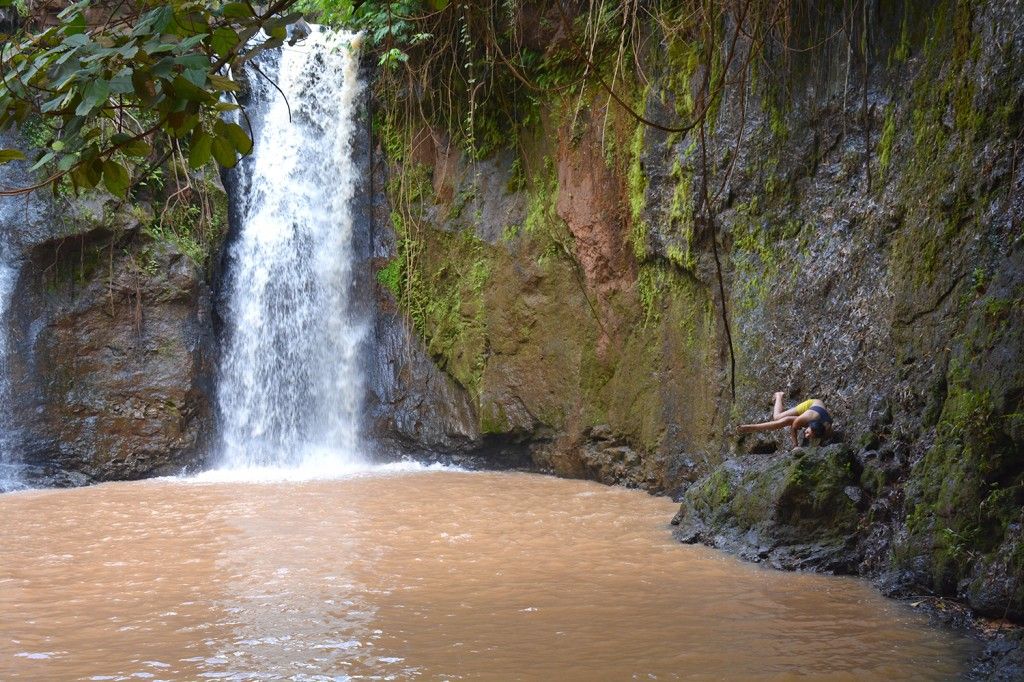

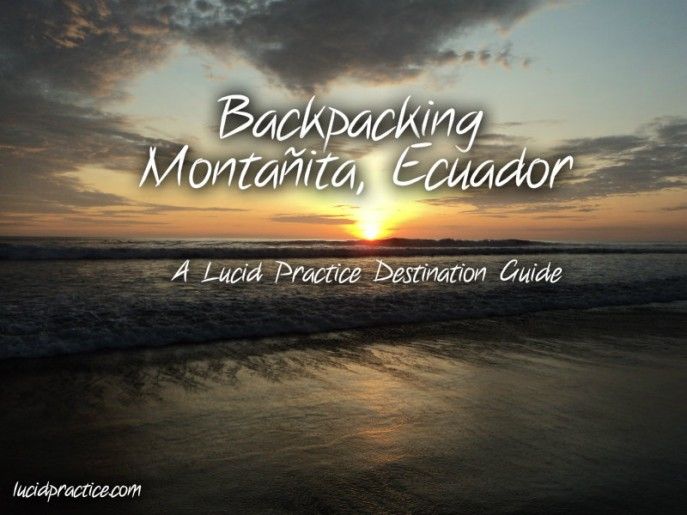
Montanita Ecuador : How to get there, where to stay, and what to do:
For the past six months I had contested the idea of going to Montanita Ecuador. The sun-soaked beach town is known around the world for its surfing and party scenes. Given its reputation for catering to a rowdy crowd, Montanita didn’t seem to be the ideal location to spend a few weeks relaxing on the beach.
Much of Montanita’s visitors consists of people enjoying the surf during the day and the party all night. When my girlfriend Kate finally coaxed me into stopping by for just two days, we ended up spending ten days in Montanita and the coast of Ecuador!
We found that there is a really beautiful, peaceful area here that goes overlooked by some. We also had incredible fun learning how to surf in Ecuador’s most famous break. All in all, we loved this paradise and recommend it to everyone visiting Ecuador. Montanita and the beautiful beaches around it have turned out to be one of our favorite destinations to date on our South America backpacking trip.
From Guayaquil: It is very easy to get to the Ruta del Sol (Route of the Sun) on the Ecuadorian Pacific coast from Guayaquil. The bus ride to Montanita from Guayaquil is 2.5 hours.
The Coop Libertad Peninsular Buses (CLP bus) leave Guayaquil at 5AM, 6AM, 7AM, 1PM, 3PM, and 430 PM. If you’re traveling on a Saturday during the Ecuadorian summer season, make sure to be at the bus station very early! The line to buy tickets to Montanita in the late morning or early afternoon resembles your worst Black Friday nightmares.
From Quito: We have heard to always go directly to Guayaquil and then take a bus from Guayaquil to Montanita. Not that you will likely be in danger, but there have been cases of buses being robbed from Quito on their way down the coast from the North, day or night. We recommend going directly to Guayaquil and taking a short 2.5 hour bus from there.
Departing Montanita: Buses leave for Quito at 4:45AM, 5:45AM, 10AM, 1PM, 3PM, and 5PM.
You will be able to walk everywhere in Montanita Ecuador. The entire town is ~10 square blocks. If you are staying in one of the small neighboring beach towns it is very easy to get a taxi at the taxi stand near the bus station to head back home.
If you are planning for an extended stay in Montanita you may want to rent a bike. It was very nice being able to pop on a bicycle, especially if you are staying in the peaceful, quiet section of Montanita.
Visiting neighboring towns? Jump on the “Green Bus” for a cheap bus ride ($2.50-4.00) to the beautiful neighboring cities of Las Tunas, Ayampe, Puerto Lopez, Olon, and more.
Hostel Esperanto. We have been raving about our experience at Hostel Esperanto. We have traveled the world and visited beautiful beaches, but there are not many views like the view from the terrace here. Hostel Esperanto is set in the low-key area of Montanita. You can walk for five minutes in one direction and join the wild parties or a enjoy a great meal. We loved having the opportunity to go out and join the party, but when it was time to call it a night, it was very comforting to be able to walk back to the hostel and enjoy a peaceful, quiet sleep. In the other direction, a five minute walk will take you to the best surf areas and surf schools.
Hostel Esperanto is a very clean and well-maintained hostel, which is something that is hard to find in a party locale.
Please introduce yourself to Jorge, the owner, during your stay. Jorge is a native Ecuadorian who is passionate about Montanita, surfing, and traveling. He will be able to give you great advice and history about the city and surrounding areas – where to eat, where to surf, where to party.
Bonus: If you have the time, go visit Jorge’s surf school in Las Tunas, Casa Esperanto. Not many people will have the experience you will have in Montanita if you combine the action of Montanita with Casa Esperanto’s surf school in Las Tunas. We felt blessed to live the real Ecuadorian Montanita experience.
1) Surf.
Montanita was discovered in the 1960’s by surfers who dreamed of living in a tent community and surfing everyday. They had combed the beaches of Ecuador and determined that Montanita, by the point, offered the best break for surfers. Today, Montanita is a destination for international surfers. With its tough waves and famous tubes, Montanita presents waves for beginners while still remaining challenging enough for even the most advanced surfers. Surf lessons cost $20 for two hours with an instructor. Renting a board costs $5 per hour.
Note: We were beginners and had a great time learning in the beginner break.
2) Visit the neighboring towns of Las Tunas, Ayampe, and Olon.
Have you ever dreamed of spending a day on a perfect beach you have all to yourself? We are told that these three cities are what Montanita was 30 years ago, before the parties and tourists. We spent five days in Las Tunas and never wanted to leave. The beaches are long, empty, spotless, and gorgeous. Las Tunas is still so unknown that it will literally be you, the waves, and open cabanas. Ayampe is known as the up-and-coming Montanita. Olon is the closest of the three, being right on the other side of the point in Montanita.
3) Party
We aren’t the biggest of party-goers anymore, but in a place like Montanita it is hard to not go out and see the nightlife. On weekends it will feel like you’re partying on Bourbon Street in New Orleans. We enjoyed drinking “piscolas” at some of the local cart bars that line the streets during the evening and wee hours of the night. Cheap drinks, great people watching, and great memories.
4) Practice Yoga
We recommend bringing your mat to the beach in the early morning. The water and waves are so peaceful. There are formal teacher-led practices at Casa del Sol, a beautiful retreat like setting on the point. Classes cost $8.
5) Study Spanish
Why not practice Spanish in this international beach town? Montanita features lots of Spanish schools right next to the beach. With cheap hostels around it wouldn’t be a terrible idea to use Ecuador’s coast as a cheap, fun location to further your Spanish.
Find yourself a seafood restaurant while you are visiting the Ecuadorian coast. There are many options with really affordable prices. We had our best meals in Las Tunas at De Jimmy’s Restaurante. Our favorites included pulpo al ajillo (octopus with garlic sauce), pescado apanado (breaded white fish lightly fried), camarones al ajillo (shrimp with garlic and butter sauce), and paella mixta (Spanish rice mixed with an assortment mussels, clams, squid, and shrimp). The seafood caught in the Pacific and sold the same day will rival any seafood experience around the globe.
Bonus: Make sure to enjoy fried plantains with your meals. We also loved Naranjilla batidos (smoothies). We recommend trying all the tropical fruit you can.
Hostel: $14
Food: $12
Activities: $10
Transportation: $0
Total: $36
Traveling to Ecuador or Montanita, Ecuador for the first time?
Post a question in the comments section below, we’ll respond with advice!
Kate and I decided to take a bus to Lima, Peru on Tuesday night.
From Cuenca, Ecuador to Lima, Peru it should take around 22 hours, driving straight through. Unfortunately, no bus companies have a direct bus connecting these two cities.
First, we decided take the bus from Cuenca, Ecuador to Huaquillas, Ecuador. In Huaquillas, we would cross the border, get our passports stamped, and continue on our course by bus to Piura, Peru, which is about four hours south of the border. We bought bus tickets online to take us the rest of the way to Lima. If all went well, the travel time should have been 25-30 hours.
We had a few different reasons. The first was I wanted to write an in-depth article about the experience of crossing the border in Ecuador when traveling to Lima. I think many travelers take this route and the opportunity to help people by offering a strong guide would be beneficial to those people and to our site. Another reason we chose to take the bus was the opportunity to save about $120, which can now be allocated to another part of our trip. Traveling by bus gave us the opportunity to see the desert of Northern Peru — Rolling sand dunes are not something I get to see everyday. Lastly, after traveling in China, I found that long bus rides help me learn about and practice patience.
I recently read Siddhartha by Herman Hesse. At one point in the poem, Siddhartha was having a conversation with a merchant. He had recently given up all of his worldly possessions and the merchant asks what Siddhartha can give to him. His response, “I can think, I can wait, I can fast. That is all.”
So while we were riding on three different buses on a trip that lasted just over 37 hours, I was thinking about the practice of patience and waiting. I have wanted to see Machu Picchu for years, but have known it would take a bit of patience to get there. I am learning that if I can develop this strong practice of patience, everything I need or want will eventually come. The bus ride proved to be no different. It seemed difficult and long at first, but after a while we were in a groove and it really was just another day.
“Practice and all is coming.”
We had heard great things about the small west coast Thai beach called Railay Beach. Our friend Jason whom we respect in many aspects of life — especially Thai travel — recommended insisted that we check out Railay Beach.
We decided to move north from Langkawi, Malaysia and our first stop was Railay Beach in Krabi.
Railay Beach is a hidden gem. The type of spot veteran backpackers try to keep a secret. This tiny paradise island peninsula is hidden on the West Coast of Thailand and is only accessible by boat because of the monstrous limestone cliffs that barricade it.
Railay Beach features beautiful white sand beaches and the gorgeous, crystal clear waters Andaman Sea. Railay Beach is located between the city of Krabi and Ao Nang in Thailand. The limestone cliffs of Railay Beach make for some of the best climbing in the world.
Railay Beach is also popular due to its quiet relaxing atmosphere. Accommodation ranges from bungalows and medium-priced resorts in East Railay to a collection of five-star resorts focused on West Railay. The four main areas of Railay consist of Tonsaid, East Railay, West Railay and Pranang. Backpackers tend to congregate and lodge in the Tonsai portion of the beautiful, remote peninsula.
Railay Beach is in the Southwestern part of Thailand, 120 miles north of the Malaysian border and 100 miles south or the Burmese (Mynamar) border. Railay Beach is 25 miles east of Phuket.
If you want to bus from central Malaysia, take a bus to Hat Yai, Thailand. In Hat Yai you will probably be dropped at a tourist transport office – they will always be looking to help you there. From there jump on a bus to Krabi.
How we did it: We caught a ferry from Langkawi to Satun, Thailand. There we bought minivan tickets to van us to Krabi (5 hrs, 230 Baht, $7.5 USD). This was very simple as opposed to the first option.
Beware that there will be several “pointless stops” along the way. If you’ve ever traveled in Thailand, you know that the buses stop every 30 miles or so for no reason at all. The driver lets everyone out in the hopes that you’ll buy something from the store. The drivers no doubt receive kickbacks from the store for these “pointless stops.” It got to the point where I would say to Brian, “Another pointless stop?” and Brian would laugh and reply, “Yeppp.”
From Krabi you get to take a small fishtail boat (with a lawnmower engine) over to Railay Peninsula (100 Baht, $3 USD). This was quite an experience for us because a thunderstorm erupted on our way over. For a few seconds, we thought about ditching our backpacks and jumping overboard!
There a few ways to get to Krabi from Bangkok.
First option: Sleeper bus. While it takes 12 hours to get there, a price point around 500 Baht ($17 USD) is not a bad option.
Second option: Train. Krabi does not have a railway station, but it’s easy to get there using a comfortable train to Surat Thani and then an air-conditioned bus. Using the overnight sleeper train from Bangkok (8.5 hrs), the train & bus to Krabi takes the same amount of time — it’s just much more interesting and inexpensive. (800 baht/$27 USD)
You will find buses to Krabi waiting at Surat Thani station once your train arrives. The bus fare is about 200 baht ($6.5 USD), the journey time from Surat Thani to Krabi takes 3 hours. You can purchase a train+bus combo ticket from Bangkok to Krabi.
From Krabi you get to take a small fishtail boat over to Railay Peninsula (100 Baht, 3 USD). You will arrive at East Railay Beach.
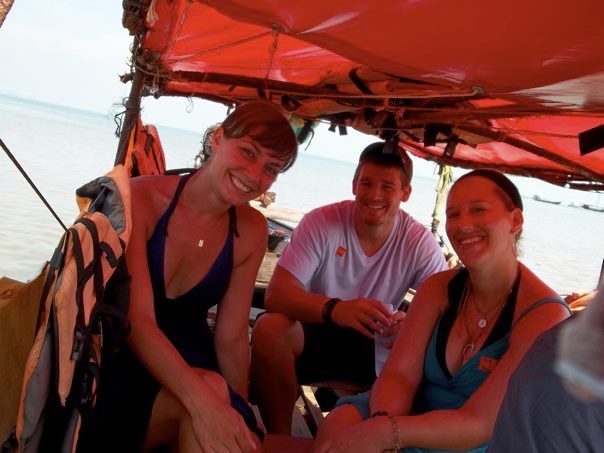
Brian w/ our Backpacker Friends on Way Back from Railay Beach to Krabi (tarp over our heads this time) 😉
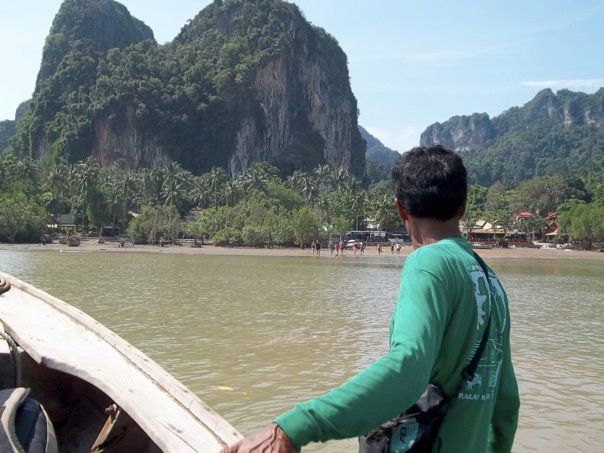
Your boat might stop here if it’s low tide and the water is too low. You walk the rest of way to East Railay Beach!
This is where your driver might stop the boat. The water gets very shallow (about .5 meters or 1.5 feet) — the engine would get ruined if he drove it up to shore. Be sure to have sandals (and good balance) for this walk!
You can explore the whole island in 4-5 days so it depends on what type of experience you’re looking for. We’re always in favor of traveling slow. We were content with reading books on the beach and casually exploring every little nook and cranny the island had to offer. You could easily stay here for a month if you’re a traveler that likes to take things slowly but we found that one week was a nice stay.
Railay has not been a major backpacking destination for a long time (this place was the undiscovered and a backpacking mecca in the 70’s and 80’s), so there are not many formal hostels. We were able to find cheap accomodation ($10 USD per night) but opted to stay in a slightly nicer place for $15 USD per night.
Be aware that the 1st of November prices at Railay are still at low season rates so it might be worth shopping around once you arrive. Have a walk around to see what you can get deal wise. It is a very small place so it won’t take long.
You’ll arrive via fishtail boat at East Railay Beach. You cannot swim or climb here but you’ll likely spend the bulk of your time here (lodging, eating, shopping, bars, etc.). For climbing and beach lounging, you’ll be on West Railay Beach. Not to worry, the entire peninsula is 2 square miles or 3.5 square kilometers.
1. Railay Beach Rock Climbing. Enough said. Scale the cliff or watch some of the world’s greatest climbers scale the challenging cliffs of Railay.
2. Chill out on the Phra Nang portion of Railay West Beach (a short walk from Tonsai where you’ll probably stay if you’re a backpacker)
3. Walk through Phra Nang Cave (this is how you get from East Railay to West Railay Beach)
4. Shop for unique, inexpensive local handicrafts and clothing on East Railay Beach
5. Go to the Rasta bar called “The Last Bar” for a Rasta music, a drink, and to see the Rasta Man and his pet otter
Fresh seafood from the fisherman and local fruit. Also, don’t miss the indian rotis! Sit right on the water on East Railay as you enjoy tea, indian roti with banana and peanut butter along with the perfect sea breeze of the Andaman Sea.
Hostel: $15 USD
Food: $14 USD
Transportation: $0 USD (no roads or vehicles on the entire peninsula)
Railay is a bit more expensive than comprable areas probably because the difficulties in transporting food to the peninsula. Think about it — every item of food that does not grow on the island peninsula, has to be transported on a small fishtail boat with a lawnmower engine. It’s really quite a unique process!
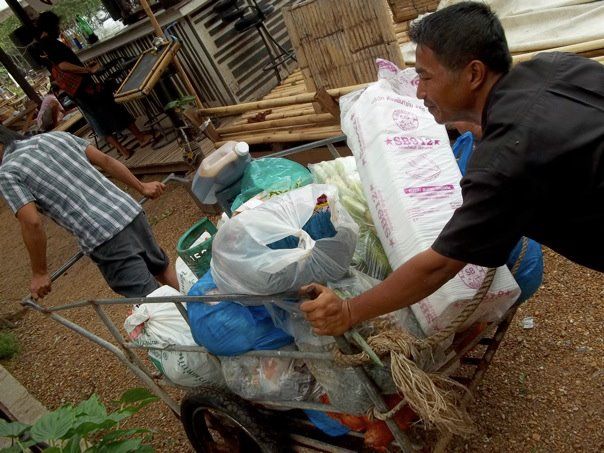
Locals transporting garbage from the island to a fishtail boat to dispose of it on the mainland of Krabi
Overall, Railay is a very laid back (no roads!), beautiful, interesting place with great food and friendly people.
Check out our other travel posts:
Traveling to Thailand for the first time? Post a question in the comments section below, we’ll respond with advice!
If you liked this post, please share it with friends and leave a comment!
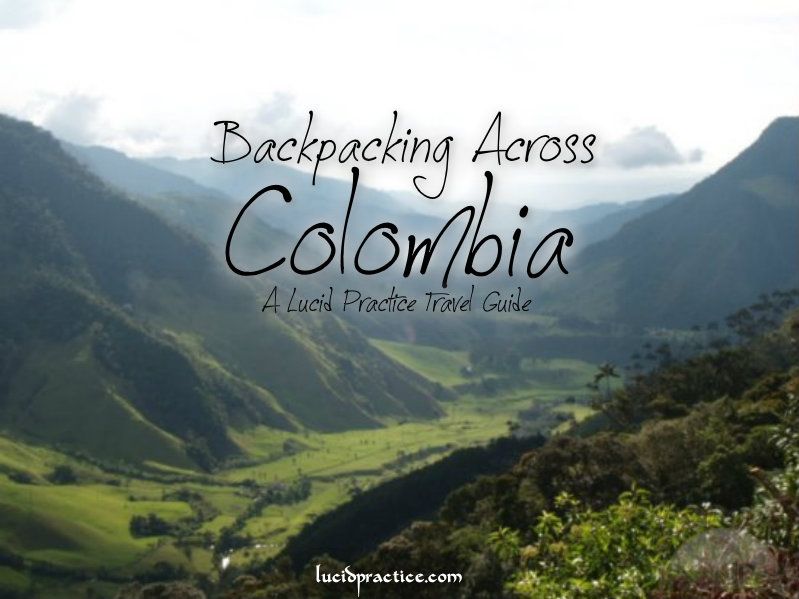
That’s right. Colombia. I know what you’re thinking, “Hello!? Don’t you think you’re, like, going to get abducted by the drug cartel and… die?” That is, sadly, just about what I said to Brian two months ago when he suggested that we travel across this once-taboo South American country. Had I actually heard any recent information or news that would make me think Colombia was dangerous? Well, no. But rumor is as good as fact, right? Right??
Apparently, no. The common misconception that Colombia is unsafe for Americans is vastly outdated and things are continuing to improve. If we would’ve listened to my original reasoning, I would have missed out on three incredible weeks in a beautiful country. If you are considering a trip to or through Colombia, please, take advice from people who have been there and done it, not from people or articles that only offer old stereotypes!
In this guide, I’ll cover cities and places to visit, how to get there, where to stay, and safety.
Where to start:
Here is a great place to begin your Colombian adventure. Cartagena is a beautiful coastal city filled with rich history.
What to do in Cartagena : Enjoy the old Walled City. During the day there are plenty of museums to check out for $5-10 USD. The Gold Museum is air-conditioned and free — a great way to escape the heat for a little bit. Once the sun starts to set, take a walk along the wall itself. Its too hot for this between 11 AM and 5 PM, but when it starts to cool off, you can really appreciate the size of the wall and the history behind it. There is even a restaurant on the wall (albeit pricey by backpacking standards) where you can grab a drink and watch the sun set over the water.
About 30 minutes (by foot) outside of the city walls lies Castillo San Felipe de Barajas. Admission costs about $10 USD. Exploring the fortress-like castle is a nice way to spend an afternoon, although, sadly, the map and descriptions are only offered in Spanish.
If you’d like a day-trip outside of the city, take a 30-minute speedboat ride over to the nearby Rosario Islands and have a beach day on Playa Blanca. The ride starts around $20 USD.
Where to Stay in Cartagena : Inside the Walled City.
Staying inside the Walled City is the most relaxing way to spend time in Cartagena. The area is safe, even to walk at night, and there are loads of attractions nearby, although you may face a longer walk if you’re looking for nightlife.
If you’re looking for the hot spot among young backpackers and don’t mind a little after-hours noise (… who am I kidding? Its loud as Hell and the street is packed), pick a hostel on Media Luna. Media Luna is a street about ten to fifteen minutes walking distance outside of the walled city. Hostel Mamallena is popular party hostel and helps arrange trips to sail to Panama City, even if you are not a guest.
Safety in Cartagena : The Walled City is safe to anyone traveling with common sense. Keep an eye out for pickpockets and don’t try to buy drugs. While I felt totally safe in Cartagena, we met someone who left town $1,000 USD poorer after a drug transaction gone wrong. Once outside of the city walls (i.e. Bocagrande or Getsemani), get around by taxi at night.
Check out our post on Backpacking Cartagena for more info!
Next stop: Take the 14 hour night bus to Medellin. The night bus is safe and surprisingly comfortable. For a more relaxing ride, be sure you are equipped with earplugs! You will want them when the loud music is still going strong at 3:00 AM. Colombian night buses are also notorious for their icy cold air conditioning. You’ll want to wear warm clothes and bring a blanket. The bus costs about $52 USD before negotiation. IMPORTANT: Colombian bus prices are always negotiable! If they ask you for $52, maybe offer them $30 then meet in the middle.
A true city on the rise. It has been over 20 years since the death of Pablo Escobar, marking the end of the world-known cocaine trafficking and political corruption era. While Medellin was once the center stage for corruption and violence, the city is now in the midst of a striking comeback. Medellin is Colombia’s second largest city and boasts an incredibly easy-to-navigate Metro system.
What to do in Medellin : There is an unlimited amount of things to do in this beautiful city. One of my favorite activities was visiting the Museo de Antioquia, which features dozens of Colombian-native, Ferdinand Botero’s paintings and much, much more. Other activities include fabulous free walking tours, paragliding, touring Pablo Escobar’s mansion (spoiler alert: it’s been bombed), taking the cable car up the mountain, visiting the city’s Botanical Garden, or taking it easy during the day to get ready for a big night in El Poblado, the city’s center for nightlife.
Spending: The Metro system lets you easily get around without spending much money. A single ride only costs $1,800 COP (less than $1 USD). The local grocery stores are Euro Markets and Exitos. Save money during nights out in El Poblado by bringing your own drinks. Travelers and locals party and drink in the park square located in the middle of the bar/ club area.
Where to stay in Medellin : El Poblado.
This is the section of Medellin where most young travelers flock to and is close to the nightlife. The Tiger Paw is a popular hostel at $10 for a dorm. For a less touristy experience, stay in Laureles. A great hostel in this middle class section of Medellin is the Buddha Hostel at $12 per night.
Safety: As is the case in any big city, you’ll want to be careful here. Try not to flash around passports, cameras, or cell phones. Always have your hostel or restaurant call you a cab after dark.
Next Stop: Take a 2 hour bus to Guatape. The cost is about $6 USD before negotiation.
A great area to escape the city for a weekend! Guatape has a lot to offer tourists and is beautifully set on Lake Guatape, a man-made reservoir. The hydro-electric dam supplies power to most of Colombia, as well as some neighboring countries.
What to do in Guatape : Come for the weekend (or longer if you decide you love it, like we did!) and participate in the many activities catered to Colombian and foreign tourists. Take a boat ride on Lake Guatape. Captains will take you past one of Pablo Escobar’s (bombed) mansions and over the sunken village that was flooded to create the reservoir. You can still see the steeple of an underwater church! Be sure to wear your swimsuit and take a dive into one of the lakes warm pools.
Climb La Piedra del Peñol (“The Rock”). It takes 45 minutes to walk from town and the cost of admission is around $4 USD. The view from the top is worth every step!
You can also kayak, explore the small town and its interesting cuisine, or find a quiet place to practice yoga.
Where to stay in Guatape : The Lakeview Hostel. The bus will drop you off right down the road from this $10 USD hostel. The staff here speaks English and are very helpful with arranging activities for their guests. They also offer an option to work for them in exchange for free housing!
Next Stop: Salento. It takes a bit of patience to get this out-of-the-way town in the Coffee Region. I recommend taking the night bus since it is safe — save money on a hostel and sleep during “wasted” travel time! Take the last bus from Guatape (6:30 PM) back to Medellin (2 hours). Once in Medellin, you will have to take a taxi from the North Terminal to the South Terminal (Terminal del Sur). Our taxi cost around $6 USD. Next, board the last bus to Armenia (11:00 PM) which is $20 USD before negotiating. This bus takes around 6-8 hours depending if there are accidents on the road. Prepare yourself for a night of twisting and turning up and down mountain roads! Note: Bring a blanket – the bus gets icy cold! From Armenia there are buses to Salento (45 minutes) throughout the day for only $1.50 USD
This small town is set in Colombia’s Zona Cafetera (Coffee Zone), which is a vital to Colombia’s economy. Salento is a charming town of less than 8,000 residents and a great spot for backpackers and vacationers to enjoy.
What to do in Salento : Relax! Enjoy the views! Practice yoga on a mountain overlooking a valley of wax palm trees! And once you’ve taken it all in, visit a coffee plantation – I recommend Finca de Ocasa ($4 USD)! Learning about the coffee we consume daily was incredibly interesting to me. From the growth, to the processing, to which well-known distributors select which grade of coffee, I was completely absorbed for the entire tour.
If you’re itching for your next trek, hike through the Valle de Cocora (Cocora Valley). This trek can be completed in 6-8 hours and offers views of the rare and beautiful Wax Palm trees. There is no entrance fee, so this is a free activity!
Where to stay in Salento : We very happy with our accommodation at La Serrana Eco Farm and Hostel ($11.50). It is set 30 minutes from town (by foot) on top of a hill overlooking beautiful surrounding valleys. La Serrana offers free breakfast, delicious and inexpensive communal dinners, and tons of DVDs for watching (in English!). La Floresta Hostel is another option that is more budget-friendly, starting at $8.75 USD and located right in town. La Floresta is much more dated than La Serrana, but offers mud boot rentals for hiking Valle de Cocora as well as free maps and tourist information.
Next stop: Cali. Take the bus back to Armenia. If you’re traveling during a busy time, keep an eye on your bags here! Several thefts have been reported in the Armenia bus station. From Armenia, board the bus to Cali ($10 USD). This bus takes around 4 hours.
This exciting city is not to be missed! Known to be the Salsa Capital of Colombia, and possibly the world, Cali can inspire even travelers with two left feet to get up and dance.
What to do in Cali : People love Cali for the culture of their nightlife. Practice your salsa skills during the day and let them loose when the sun goes down at one of Cali’s numerous salsa clubs. Many hostels offer free lessons. Private instruction is also available for a small hourly fee ($6 USD). Take at least one lesson while you are here, whether you are a dancer or not. You won’t regret it!
The Cali Zoo is a fun daytime activity in Cali and there are a few beautiful churches worth a visit, as well.
Where to stay in Cali : Hostel Viajero in the historical neighborhood of San Antonio. I was so impressed with this $12 USD hostel. Free daily salsa classes, free yoga classes, free breakfast, and the list goes on – all on top of a great atmosphere.
Safety: Cali is a big city and requires taking extra safety precautions. Always have your hostel or restaurant call a cab for you, as cab robberies do often happen, and ALWAYS take a cab after dark.
Continuing on to Ecuador? Keep in mind that night buses to the Southern Colombian border are NOT safe right now and are sometimes held up by armed bandits! Instead, spend the night in the border town of Ipiales, Colombia and check out this beautiful church!
If you’re planning a trip to Colombia and have any questions, we would love to help! Leave a question in the comments section below.
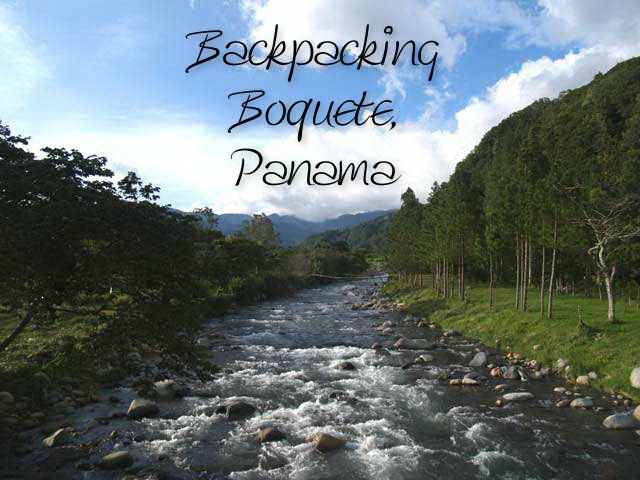
Boquete, Panama : How to get there and what to do:
Boquete, Panama proved to be the perfect change of pace from the hot sun of Costa Rica.
Boquete is located in the hills of Northwest Panama, and it’s a great spot for all types of travelers. While this mountain town is a hub for backpackers traveling through Panama, tourists and retirees have also found Boquete to be an ideal place to relax and take in some nature. We loved our five day stay here and look forward to coming back.
The heart of this small city is a few streets offering shops, tour centers, markets and restaurants. There is a beautiful bridge that crosses over the Caldera River – a great place to spend a day reading and relaxing.
From Costa Rica: After six hours of traveling we arrived in Boquete, Panama. We started in the Osa Peninsula in Puerto Jiminez, Costa Rica. We took a ferry across the Golfito Bay to a town called Golfito, Costa Rica. From Golfito we jumped on a local bus headed to “Canoas” or Paso Canoas, Costa Rica, the west coast border town between Costa Rica and Panama.
We then had to go through the somewhat challenging process of immigration. Panama expects you to have an outbound departure ticket when you come into their country. We think it’s a bit of a scam; they either make you buy a bus ticket back to San Jose, Costa Rica ($14) or a plane ticket back to your home country. At an internet café in Canoas we decided to buy a flight back to the US – ten minutes after we got our stamp we canceled the reservation.
We crossed the border into Panama, a country that looks like a “sister country” of the United States. The highways are new and beautiful. The buses or “collectivos” are jitney-style and offer air conditioning. It’s a pleasant change from some of the more rural aspects of traveling through Costa Rica.
We jumped on a bus from the border to David, Panama, a transportation hub located in the northwest of Panama. After about five minutes at the station, we boarded a bus for a 1 hour ride to Boquete.
If you are coming from San Jose, Costa Rica, there is a morning bus from the Tracopa terminal that leaves at 7:30AM ($15-20). This bus takes about 9 hours to get to David.
If you are coming from Panama City, Panama, there are daily flights to David which are about $100 each way. There are also both day and night buses from the Albrook Terminal. Look to spend between $15 and $20 on the bus from PC.
Many backpackers come from Bocas Del Toro, Panama. There are shuttles that run direct between Bocas Del Toro and Boquete ($29). We suggest you bus to David and take a bus from David to Bocas ($10). This route adds an extra hour or two to your travel time, but is an easy opportunity to save money.
The Gaia Hostel. We had an amazing experience at this top rated hostel ($13). Its clean, comfortable, and spacious. Amenities include free wi-fi and inexpensive laundry service — but not much in terms of tours and activities. If you’re looking for help arranging tours or excursions, take a walk to Hostel Mamallena, located in the Central Park square.
Word from the wise: always bring ear plugs and a sleeping mask to any hostel!
1) Hike Volcan Baru.
Kate wrote a great guide about our experience trekking Volcan Baru. Check it out in the above link.
2) Visit The Lost Waterfalls
This fantastic hike through a cloud forest that will bring you to three gorgeous waterfalls. It takes 1-3 hours to complete the trek depending on your level of fitness. On the way to the falls it is very common to see monkeys, sloths, and fascinating birds including quetzals.
3) Boquete Coffee Tour
Many people head to the fincas of Dos Jefes, Kotowa or Café Ruiz. All of these are beautiful coffee plantations with plenty to see. You will learn a lot during one of these sessions. The process of how your favorite brewer selects the coffee they serve may or may not scare you into switching to tea. We were impressed with the level of English at Dos Jefes. If you are on a short trip, this is not to be missed in Boquete.
4) Cliff jumping and climbing at the Mini Canyon
A lot of backpackers love this day trip provided by Hostal Mamallena. Boquete features some incredible rock formations that are great for climbing and cliff jumping into the water. Bring sunscreen as the sun is very powerful in this area.
5) Visit the Hot Springs
There are four or more pools at the Caldera Hot Springs and they are all-natural!! Skip the tour guide on this one and take a taxi — be sure to also arrange for a ride home. Entrance to the hot springs costs $5. Tip: Go in the early morning or in the late afternoon as the water gets very hot during midday.
Hostel: $11 USD
Food: $5-$10 USD
Transportation: $2 USD
Traveling to Panama or Boquete, Panama for the first time? Post a question in the comments section below, we’ll respond with advice!